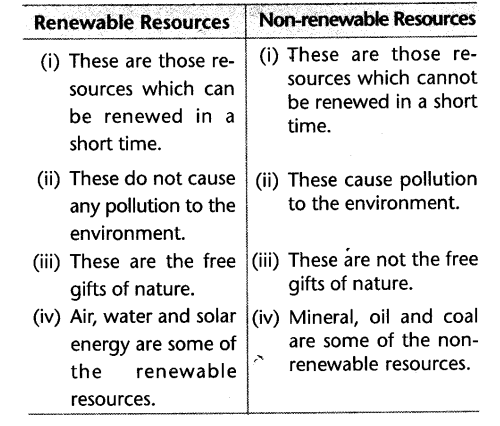Introduction: The Industrial Revolution of the 19th century ushered in new technologies. The spurt in inventions in that century was unprecedented in many ways. Some of these inventions involved use of natural resources like coal and oil. The thought of exhaustible nature of these resources and the environmental damage from the use of these resources never occurred either to the inventors or the subsequent generations. In the quest to sustain galloping economic activity, the dependence on coal and oil has soared at a phenomenal rate over the years.

Non conventional sources: (1) Bio mass. 10 class science notes, science 10 class notes,sources of energy class 10 notes pdf, source of energy class 10 notes. Notes on solar power. Download as PDF, TXT or read online from Scribd. Renewable energy sources also called non-conventional energy, are sources that.
The burnt fuels result in the release of carbondioxide and other gases into the atmosphere causing environmental damage. It has become imperative to look at energy technology with a new perspective.
There are abundant renewable sources of energy such as wind, sun, water, sea, biomass apart from even daily wastes. These sources are pollution free and hence clean energy apart from being unlimited/ inexhaustible.
Power generation in India has grown in size to around 1 lakh MW and in Tamil Nadu it has increased to 7924 MW which is distributed through a vast network of transmission, sub-transmission and distribution lines that reach all villages even in remote areas. The demand for power is growing rapidly. The problem will be compounded due to fast depletion of fossil fuel deposits, quality of fuels, heavy price to be paid for basic materials plus their transportation cost and above all the environmental degradation caused by the use of conventional energy sources. Under such conditions, environment-friendly and pollution-free, non-conventional and renewable energy sources known as 'clean and green energy' have emerged as an important alternatives to conventional energy sources.
The renewable energy sources are clean and inexhaustible as they rely on sun, wind, biomass, etc., as primary sources of energy. It is estimated that, about 2000 MW can be generated from wind potential available in Tamil Nadu. As against this potential, 19 MW of power in the State Sector mostly through demonstration wind farms and 838 MW in the private sector have been harnessed as on 31.3.02, Under Biomass, the estimated potential is about 500 MW and 154 MW capacity has been expected using biomass/bagasse. The country is endowed with large amount of sustainable resource base and non-conventional energy technologies which are well-suited for grid connected power generation, energy supplies in remote areas which are not/ could not be connected to the grid and for captive consumption. Non-conventional energy sources like wind energy, solar energy through thermal as well as photovoltaic system, biomass and hybrid sources will help to a great extent in enhancing power generation capacity. Hence appropriate policies and programmes that optimise the use of available energy resources with new technologies have to be propagated, promoted and adopted, if necessary, by budgetary support. Tamil Nadu has done very well in promoting and harnessing renewable sources of energy particularly wind and bagasse based power generation.

With a view to develop and propagate the non-conventional sources of energy, the Tamilnadu Energy Development Agency (TEDA) was formed in 1985. Apart from serving as a coordinating agency to promote the use of non conventional energy sources. TEDA acts as nodal agency to the Ministry of Non-conventional Energy Sources (MNES), Government of India to implement Centrally funded and sponsored schemes in the State. During the past 17 years, TEDA has conducted sustained campaigns to promote harnessing of renewable energy with active support from the Central and the State Governments. Smokey robinson discography torrent download pc. The total installed capacity in Tamilnadu under Non-conventional Energy Sources is 1000 MW as on 31.3.2002 which is about 13% of total TNEB grid capacity, while at the All-India level, it is only 3%.